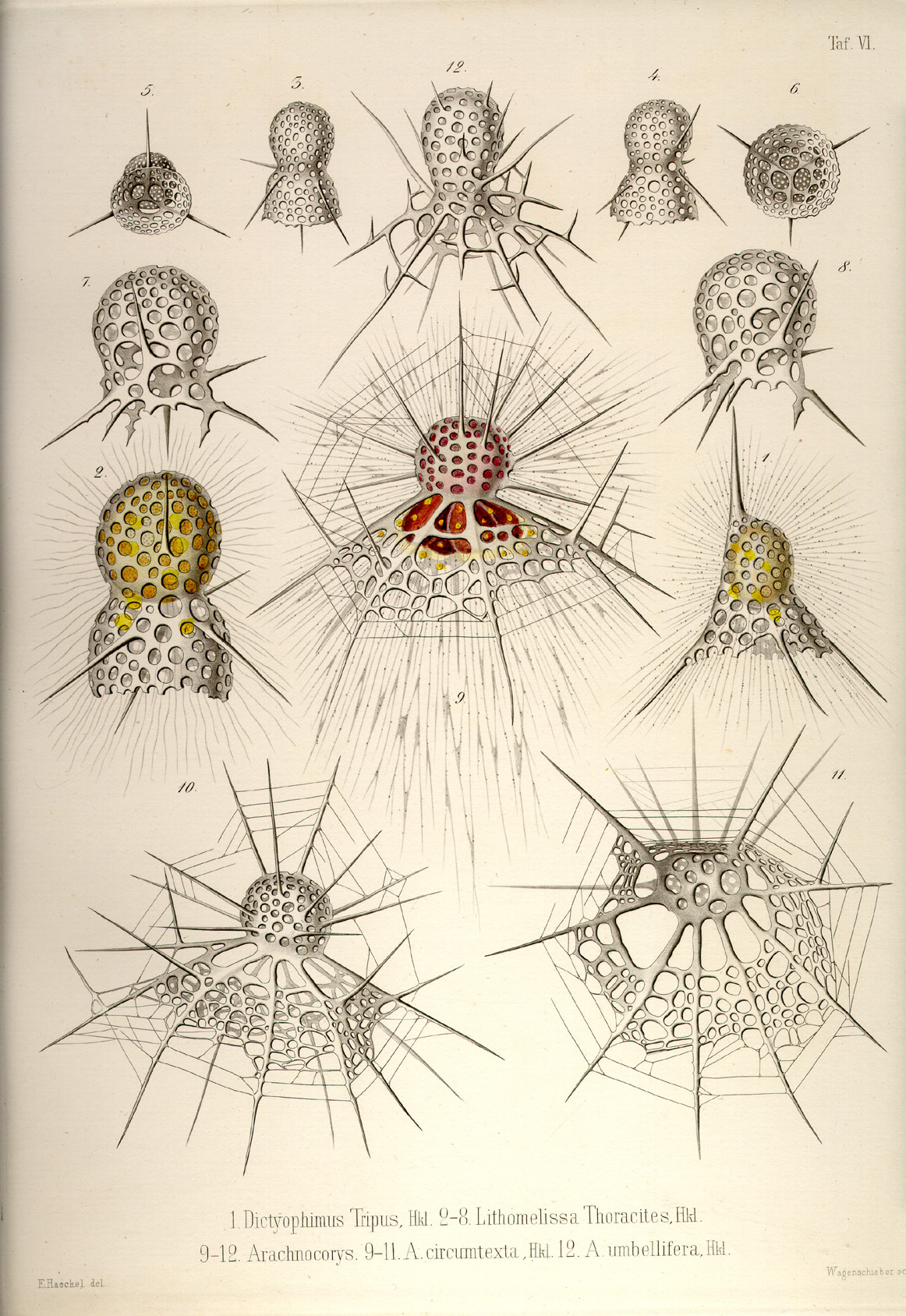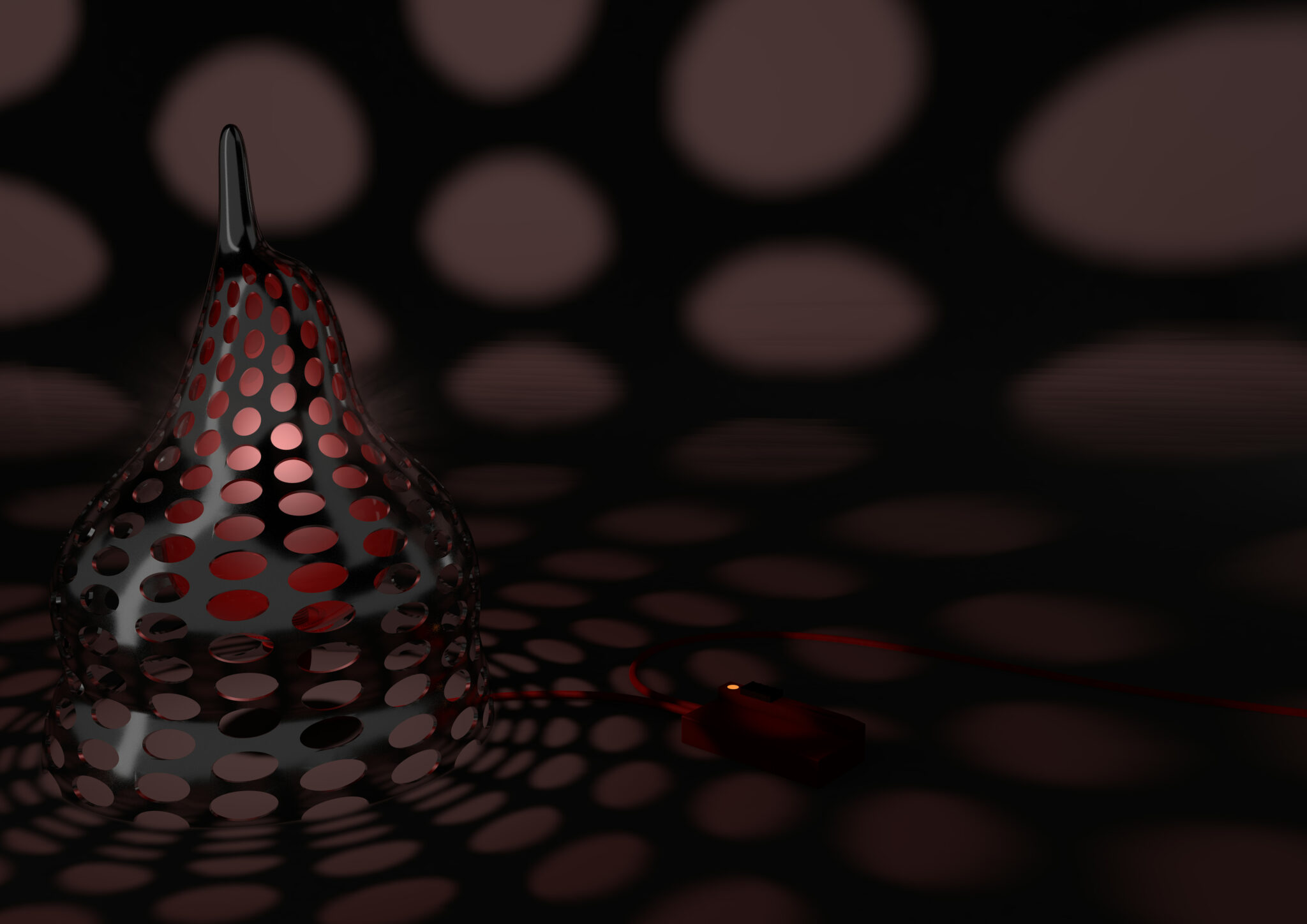Collection of lamps born by observing the shapes of RADIOLARS, or marine protozoa that are part of the zooplankton. The Tuscan artist, Erica Fineschi, born in 1990, attended the Duccio di Buoninsegna Art Institute in Siena, address “painting”, then graduated in Biological Sciences and in 2015 enrolled at the Free Academy of Fine Arts (LABA) of Florence in the three-year degree course in Design. This path traces the path of the artist and the love for living beings, especially the most mysterious, such as radiolarians that sometimes resemble tiny stars as their skeleton is formed by very thin silicon dioxide needles, similar to beams of light (mostly bioluminescent creatures) that radiate from the cell body. Most of the images that can be found today are due to a German biologist, zoologist, philosopher and artist Ernst Haeckel (1834-1919) who with his publications was the first to spread the knowledge of the Radiolarians. In the tables of Haeckel art and science get married and it is no coincidence that the Radiolarians immortalized in the “Kunstformen der Natur” inspired the Art Nouveau of René Binet, Hermann Obrist and August Endell: the most striking example is probably the monumental Gate of the Universal Exhibition of Paris of 1900, erected in the Place de la Concorde and designed by Binet, who reproduced a sort of gigantic skeleton of Radiolare.
CLIENTI OEM












































